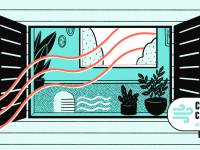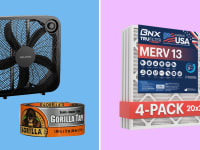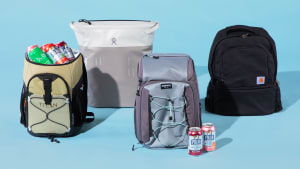Is your air purifier in the best spot? Follow these rules
Placement makes a big difference in performance
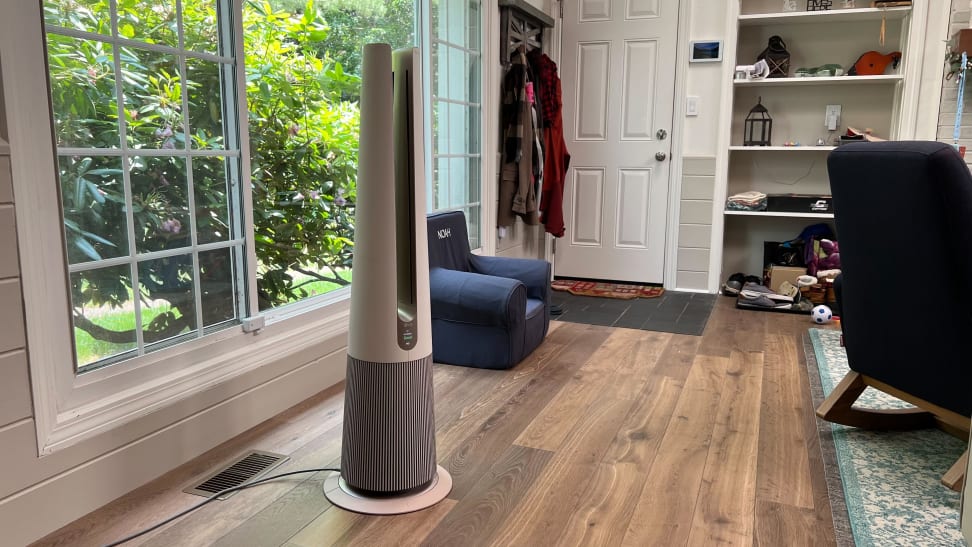 Credit:
Reviewed / Danielle DeSiato
Credit:
Reviewed / Danielle DeSiato
Recommendations are independently chosen by Reviewed's editors. Purchases made through the links below may earn us and our publishing partners a commission. Prices were accurate at the time this article was published but may change over time.
If you’re concerned about indoor air quality, buying an air purifier is an important first step. We’ve tested dozens of air purifiers suitable for different spaces and types of air pollution.
There’s more to using an air purifier than plugging it in and letting it get to work. Air purifier placement is all-important.
For the cleanest possible air, follow these simple steps to find the best place for your air purifier.
Give your air purifier some space
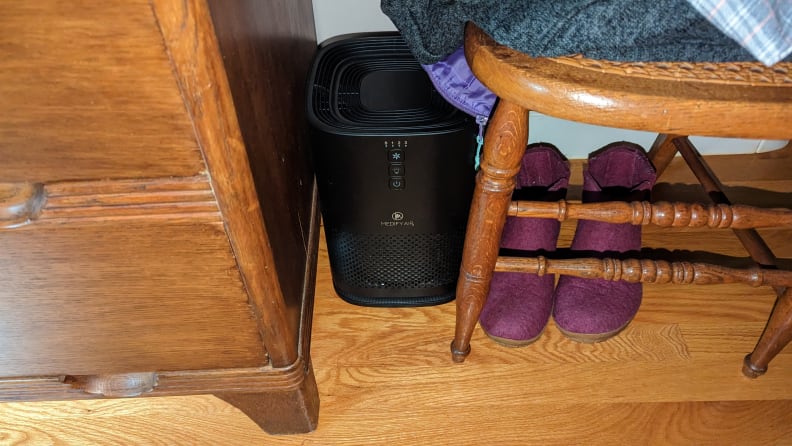
Don't do this! Surrounding your air purifier with clutter will block the air flow.
Most air purifiers work in the same way: A fan pulls in unfiltered air, passes it through a filter, then returns clean, filtered air to your living space. This design means you need good air circulation to remove pollution, making air purifier placement a crucial first step in successfully achieving cleaner indoor air.
Although it may look tidier, tucking your air purifier in a discreet corner could block the air intake and disrupt the outflow of fresh air.
Allow space around the vents to maximize performance. A few feet of space is ideal, but you might need to compromise to avoid trip hazards.
If your air purifier has to emerge from the shadows, then you could consider investing in one that looks good. The Coway Airmega Icon is one of the best looking air purifiers we’ve tested, so you won’t need to hide it away.
Choose the right purifier for your home layout
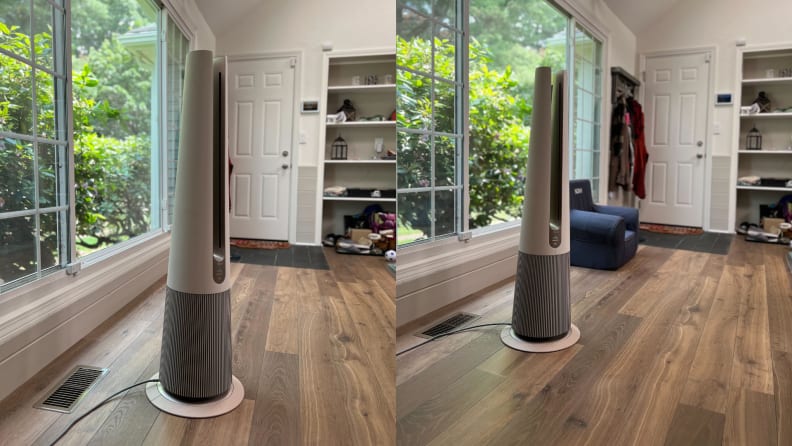
Larger air purifiers that create good circulation are ideal for open plan spaces.
Air purifiers are rated by the volume of air they can clean, also known as the clean air delivery rate (CADR). As a rough guide, the CADR rating should be at least two-thirds the square footage of the space you’re purifying.
If the CADR number isn’t clear, you can follow the manufacturer’s recommendations for area coverage.
When it comes to air purifier placement in an open-plan home, maintaining good airflow is simple. A single, large air purifier, like the LG Puricare Aerotower, can give you all the air movement you need.
If, like many homes, your living space is divided into smaller rooms, maintaining enough airflow for good filtration isn’t possible with a single air purifying unit. You’re more likely to get effective air filtration with several small air purifiers placed at different locations in your home.
Put air purifiers where you spend the most time
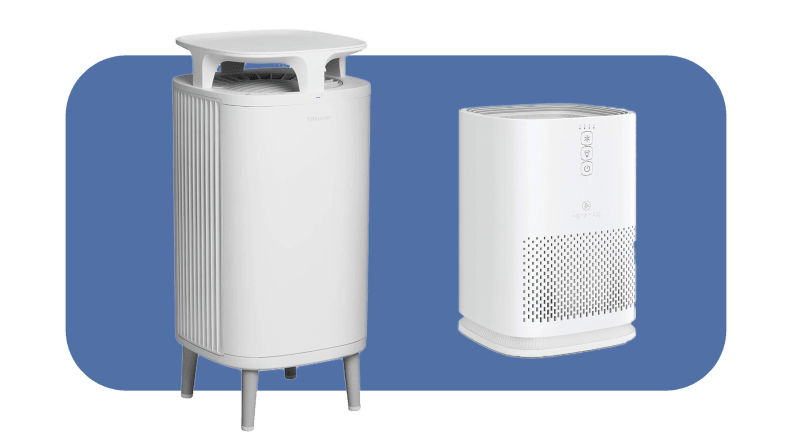
Clean air can be available within minutes of bedtime with the help of the right air purifier.
Given the amount of time we spend sleeping, it’s important to have an air purifier in the bedroom. For uninterrupted sleep, a sleep mode with low display lighting and a quiet fan is essential.
These are air purifiers we’ve tested that have a sleep mode, low noise levels, and a CADR suitable for a typical bedroom:
The Blueair DustMagnet 5410i is whisper quiet, the ideal size for most bedrooms, and even serves as a handy bedside table.
The Medify Air MA-14 is the smaller cousin of our best HEPA purifier, the Medify MA-50. It’s compact, quiet, and I use it in my own bedroom at home.
Scientists at UCLA found that during the day, we spend a lot of time near the TV or in the kitchen. So, when considering where to put an air purifier in your home, also prioritize the living room, family room, and kitchen.
Since COVID changed working habits for some, the home office is another obvious choice.
The good news is that because we change our location throughout the day and night, you can minimize the number of air purifiers you need by placing a portable unit where you’re currently spending the most time.
Place a purifier near the pollution source
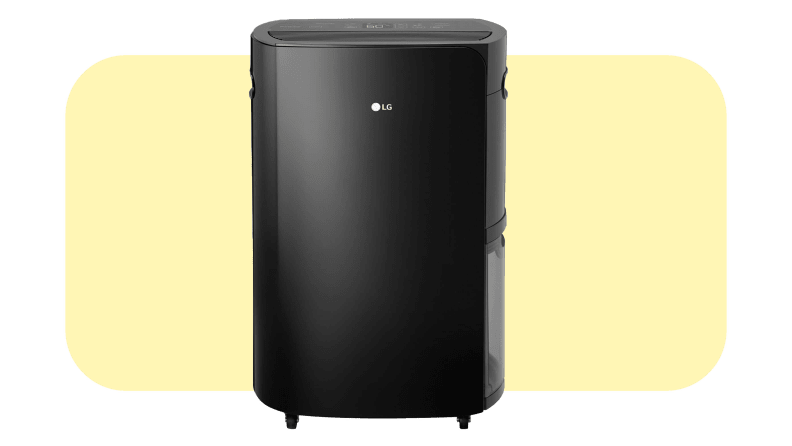
Pollutants can creep into your home and disrupt air quality if you're not careful.
Some pollutants, like wildfire smoke, pollen, and exhaust fumes enter our homes from the great outdoors.
Open windows and doors are great for ventilation, but can also invite in outdoor pollutants. Putting an air purifier near these entry points will limit the problem.
Gas ranges can also reduce indoor air quality. A kitchen air purifier, as well as good ventilation, will help reduce that problem.
Finally, high humidity or basement damp spots can increase mold growth and spread airborne mold spores. If you have dampness problems a dehumidifier is important for keeping mold under control, and a nearby air purifier will grab any mold spores before they can spread.
For effective dehumidifying in combination with an air purifier, we recommend the top performer from our tests, the LG Puricare 50 Pint dehumidifier.
Keep your air purifier clean
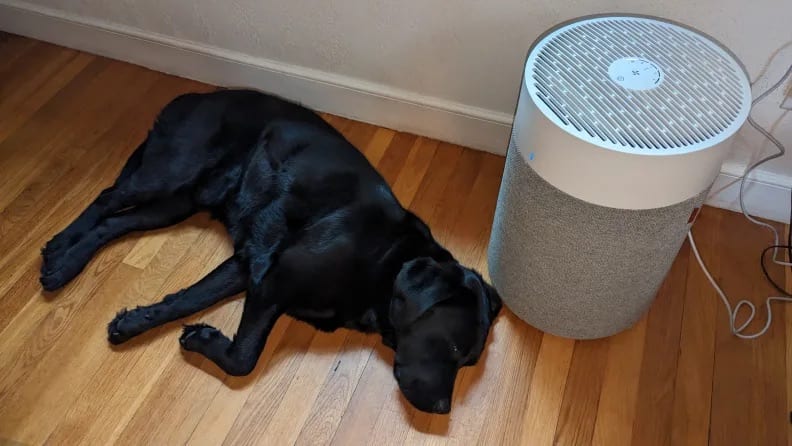
Air purifiers with washable prefilters like the Blueair Blue Pure 311i Max are a must if you have a pet.
Choosing a good air purifier and putting it in the right place only works if you keep your purifier in good condition.
If you have pets, air intakes can soon get blocked with hair and pet dander. Keep the outside of your air purifier clean, and consider a purifier with a washable prefilter.
In our testing we’ve found that HEPA filters get less efficient as the filters clog with dust, so change your filters regularly.
With their washable prefilters and relatively inexpensive filters, these purifiers are easy to maintain in the long term:
The Blueair Blue Pure 311i Max has an easy to clean fabric prefilter that traps pet hair.
The Winix 5500-2 also has a washable prefilter, and is also our best value air purifier pick.

